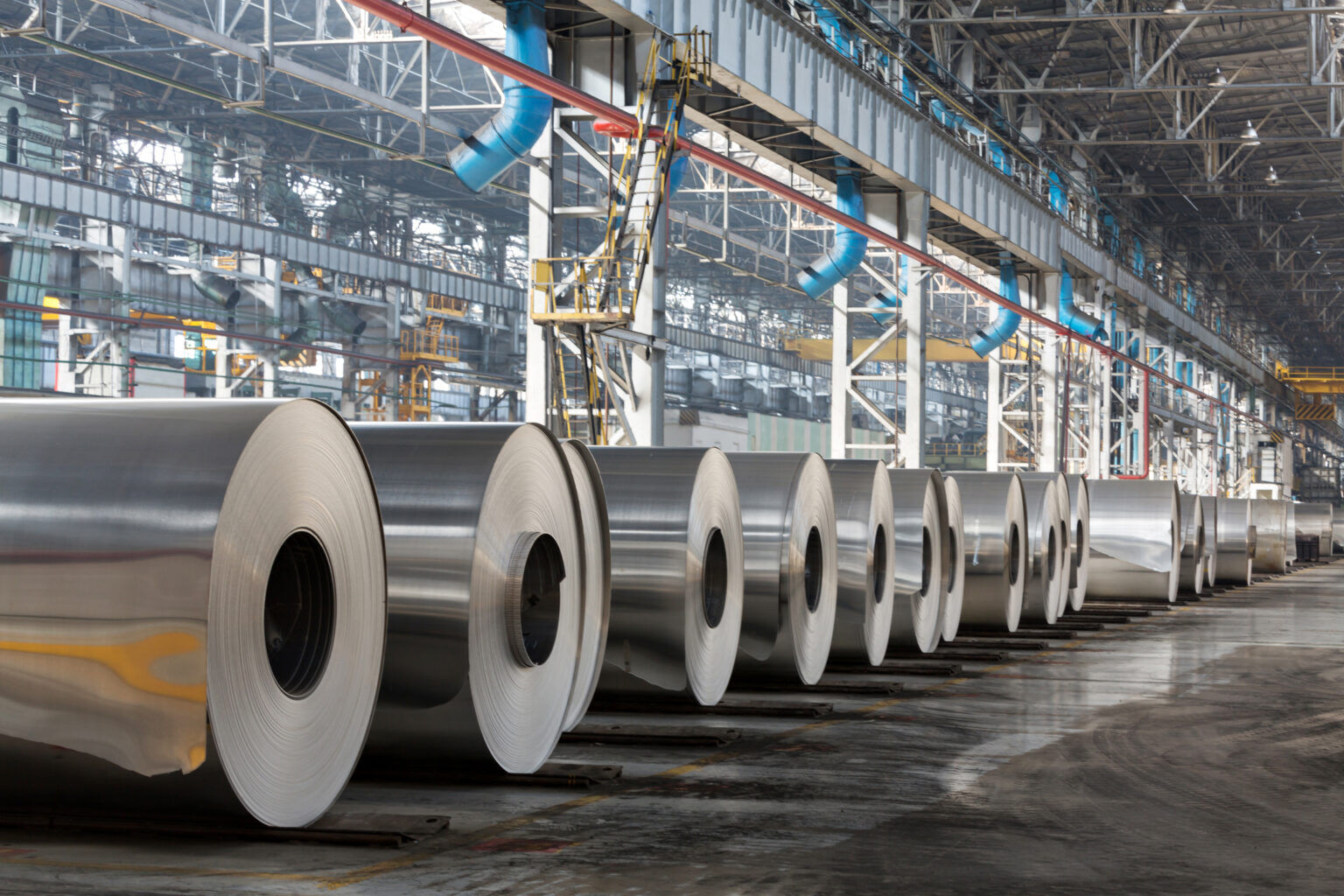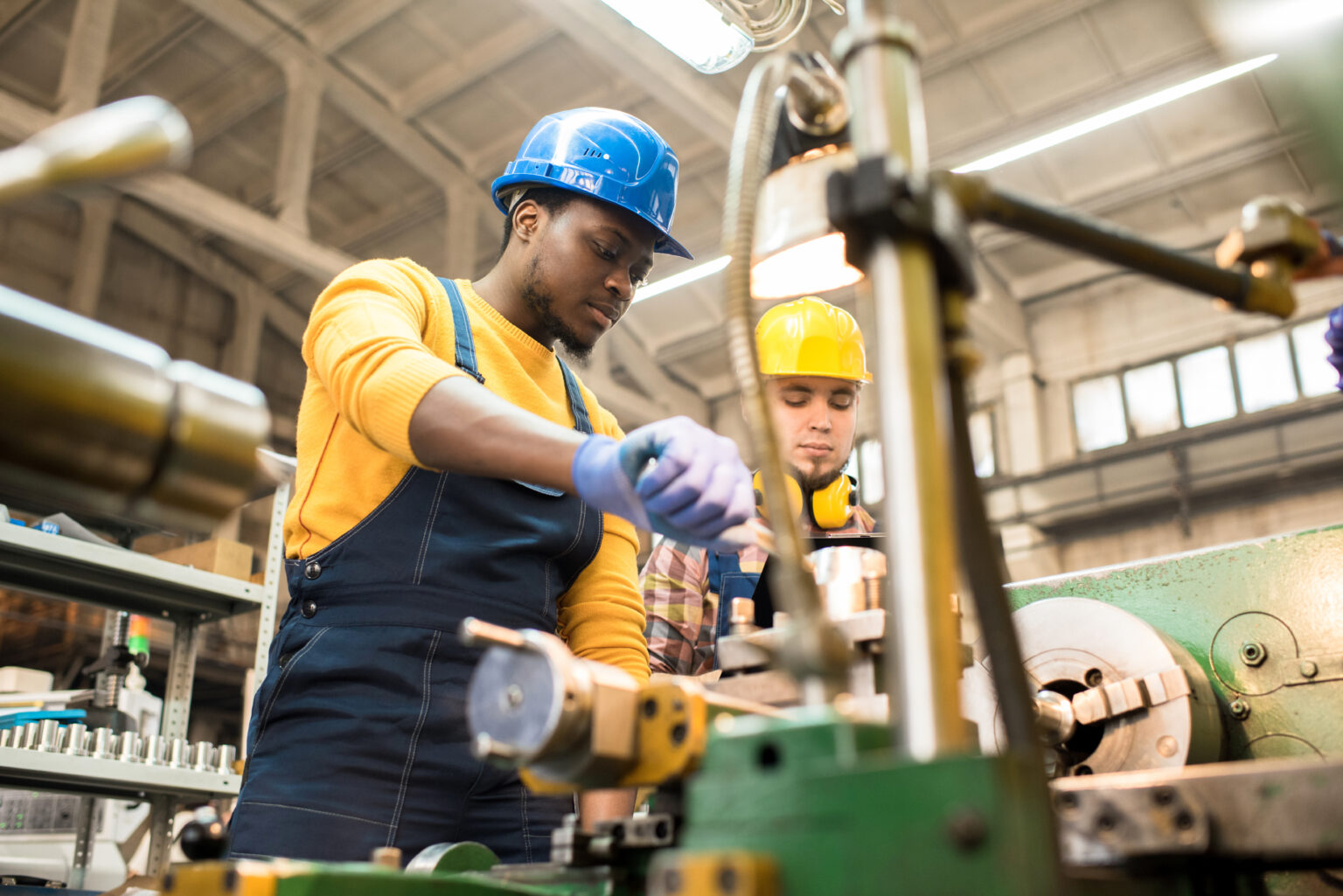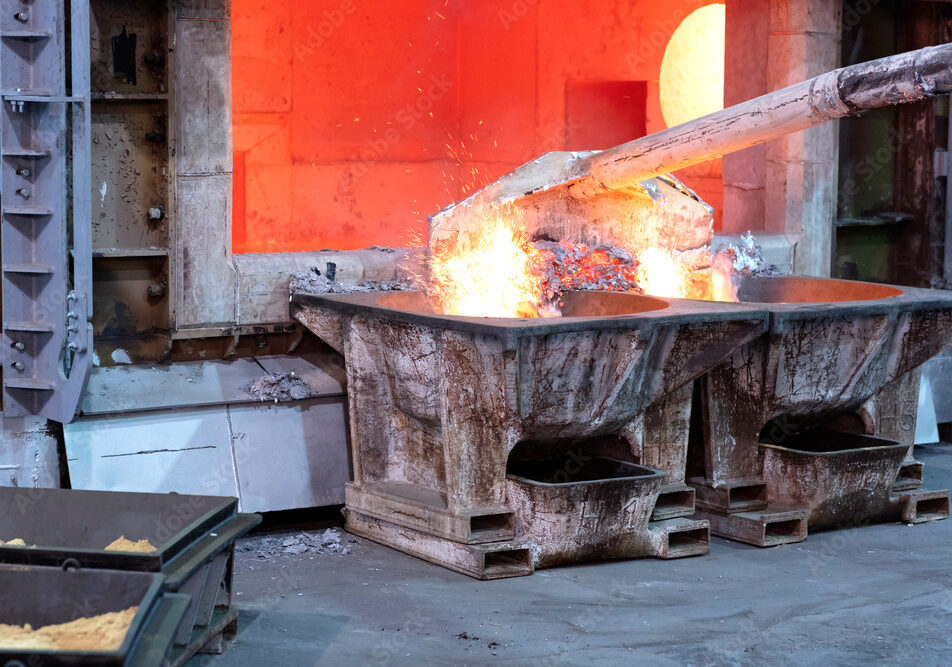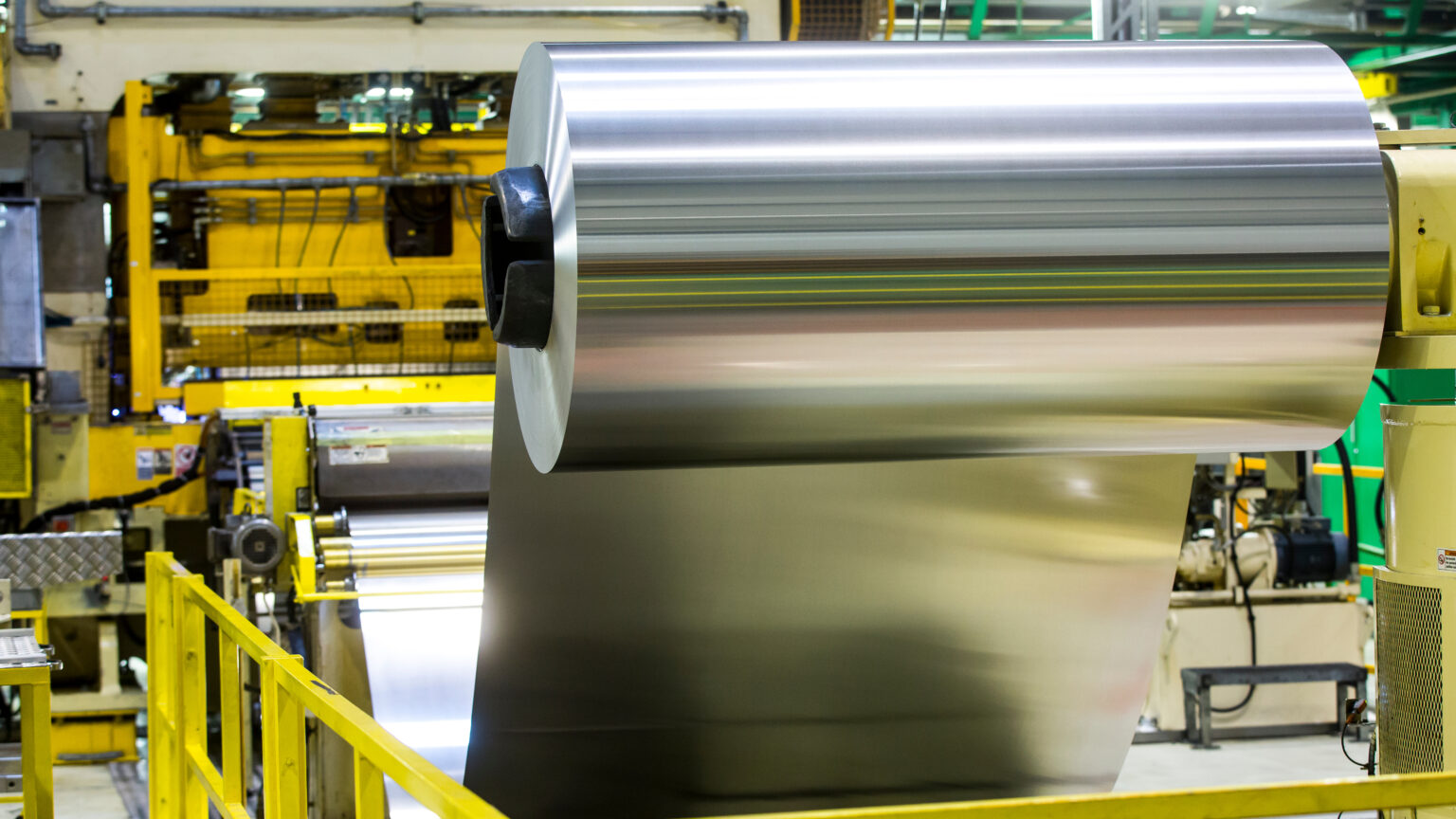
Clean Aluminum
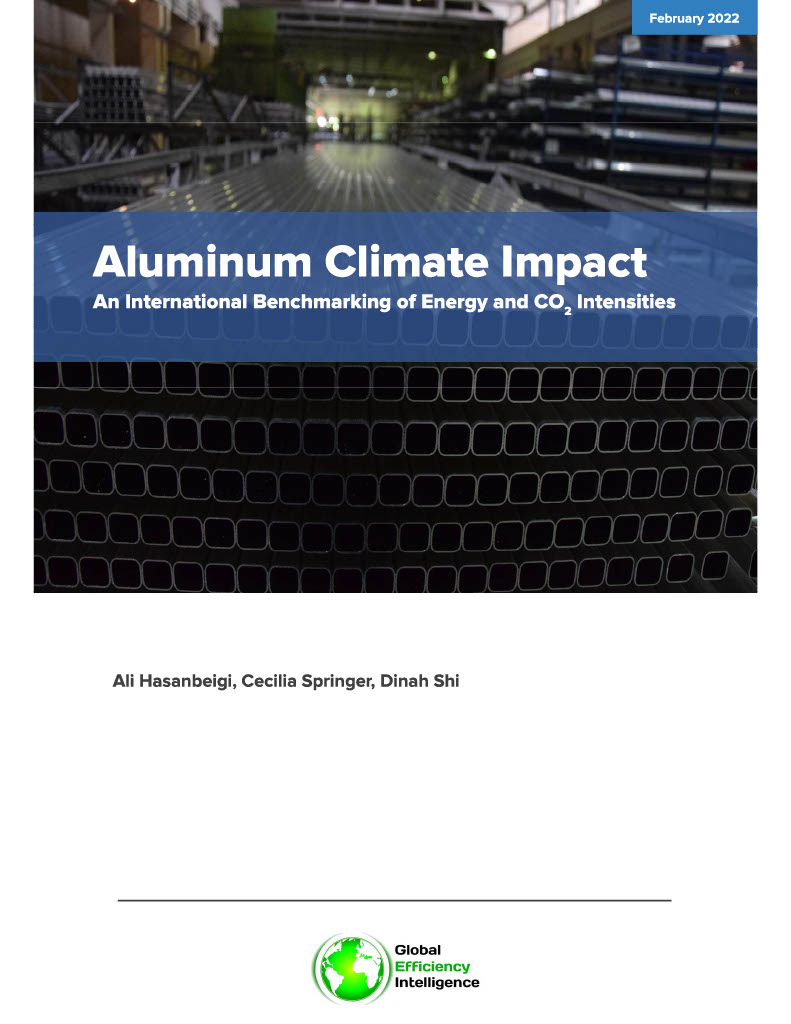
Aluminum Climate Impact: An International Benchmarking of Energy and CO2 Intensities
This report finds that producing the average ton of aluminum in China causes 60% more climate pollution than in the U.S., while India’s aluminum industry is about twice as polluting as the U.S. industry. Today about two-thirds of the world’s aluminum is made in countries with more polluting processes than in the U.S. Global aluminum production has grown exponentially from 2000 to 2020. Increased production has outpaced the small decreases in energy and carbon dioxide emissions, with aluminum manufacturing now accounting for 2% of global carbon dioxide emissions.
Economic Impact of the Aluminum Industry
 This study measures the economic impact the aluminum industry has in the United States—including the number of jobs, wages, and federal and state taxes that are paid by the industry as a whole. The aluminum industry directly employs nearly 165,000 Americans and pays those workers over $13.55 billion in salary and benefits. The study further breaks down the economic impact in different sectors of the industry including refining, manufacturing, and wholesaling. Read the full report.
This study measures the economic impact the aluminum industry has in the United States—including the number of jobs, wages, and federal and state taxes that are paid by the industry as a whole. The aluminum industry directly employs nearly 165,000 Americans and pays those workers over $13.55 billion in salary and benefits. The study further breaks down the economic impact in different sectors of the industry including refining, manufacturing, and wholesaling. Read the full report.
Aluminum for Climate: Exploring pathways to decarbonize the aluminum industry
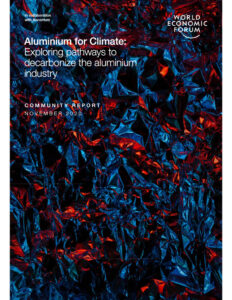 The aluminum industry is responsible for 2% of global carbon dioxide emissions, which needs to be addressed to limit climate change. The report identifies three areas of focus to significantly reduce aluminum industry emissions including decarbonizing electricity consumption, reducing emissions in aluminum processing, and increasing aluminum recycling. Cutting emissions will require a collaborative effort from all industry players—suppliers, manufacturers, and customers. Read the full report.
The aluminum industry is responsible for 2% of global carbon dioxide emissions, which needs to be addressed to limit climate change. The report identifies three areas of focus to significantly reduce aluminum industry emissions including decarbonizing electricity consumption, reducing emissions in aluminum processing, and increasing aluminum recycling. Cutting emissions will require a collaborative effort from all industry players—suppliers, manufacturers, and customers. Read the full report.
Washington State Manufacturing Sector Overview – Aluminum
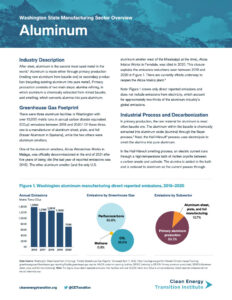 Washington was a major producer of aluminum—the second most common metal in the world—between 2016 and 2020. Because of primary aluminum’s emissions-intensive production process, the state’s facilities were responsible for 10,000 metric tons of carbon dioxide equivalent emissions annually. The report identifies key ways to decarbonize Washington’s aluminum industry and the potential for job creation with the growing demand for aluminum in the clean economy. Read the full report.
Washington was a major producer of aluminum—the second most common metal in the world—between 2016 and 2020. Because of primary aluminum’s emissions-intensive production process, the state’s facilities were responsible for 10,000 metric tons of carbon dioxide equivalent emissions annually. The report identifies key ways to decarbonize Washington’s aluminum industry and the potential for job creation with the growing demand for aluminum in the clean economy. Read the full report.
The U.S. Aluminum Industry’s Energy Problem and Energy Solution
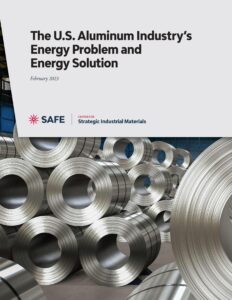 Key industries like defense, transportation, and electric power have a high demand for aluminum. However, the U.S. primary aluminum industry is declining and recycled aluminum can’t keep pace. The U.S. is currently using imports from foreign competitors to fill that gap. There are decarbonizing innovations and policy tools at our disposal to overcome our industry’s energy challenges and meet our economic and climate goals. Read the full report.
Key industries like defense, transportation, and electric power have a high demand for aluminum. However, the U.S. primary aluminum industry is declining and recycled aluminum can’t keep pace. The U.S. is currently using imports from foreign competitors to fill that gap. There are decarbonizing innovations and policy tools at our disposal to overcome our industry’s energy challenges and meet our economic and climate goals. Read the full report.
Aluminum is Essential to Our Clean Energy Future
/5
